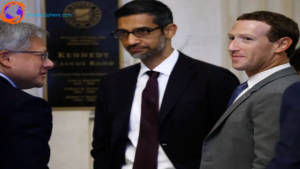Trump’s Pardons Ignite Signature Scandal: DOJ Blames “Technical Error” After Identical Signatures Surface
In a dramatic twist that has captivated political observers, the Justice Department quietly replaced several presidential pardon documents bearing identical Donald Trump signatures — attributing the error to a “technical issue” and staffing shortages. The incident not only reignites scrutiny over Trump’s own past criticism of autopen use, but also raises fresh questions about transparency, document authenticity, and the legal validity of clemency actions.
Identical Signatures Trigger Outcry
Online watchers first raised the alarm after pardons dated November 7, 2025, for high-profile individuals such as former New York Mets player Darryl Strawberry, ex-Tennessee House Speaker Glen Casada, and former NYPD Sergeant Michael McMahon appeared on the Justice Department’s website. Observers noted something unusual: each pardon had exactly the same signature.
Forensic document experts confirmed the suspicion: the initial versions of the pardons showed identical reproductions of Trump’s signature, which is virtually impossible if each had been handwritten separately. Within hours of the public reaction, the DOJ quietly replaced the documents with versions showing distinct signatures for each pardon.
DOJ’s Response: Error, Not Autopen
A Justice Department spokesperson, Chad Gilmartin, stated that the duplications were the result of a “technical error” when uploading, compounded by staffing gaps caused by what he described as a “Democrat shutdown.” According to the statement, one of the personally signed documents was mistakenly replicated across all seven online pardons.
From the White House side, spokesperson Abigail Jackson insisted that President Trump had indeed signed each pardon by hand, as he typically does, and that the replacement signatures now posted reflect that fact.
Expert Viewpoint: Why Exact Matching Is Suspect
Handwriting experts say the matter raises serious doubts. Tom Vastrick, a Florida-based forensic document examiner and president of the American Society of Questioned Document Examiners, noted that it is “a basic axiom” of signature science that no two handwritten signatures will share all the same design features. He compared the initial duplicated signatures (now visible only via archive versions) with the corrected ones, pointing out how unlikely perfect matches are if done by hand.
Critics argue that such identical signatures strongly suggest mechanical duplication — whether by scan-and-paste or some form of autopen. The irony, of course, is that Trump himself has been a vocal critic of Biden’s use of autopen to sign documents.
Legal Validity and Political Fallout
Despite the unusual signature controversy, legal experts emphasize that the pardons remain valid. The key, they argue, is intent, not the method of signing. Frank Bowman, a legal historian and emeritus professor at the University of Missouri School of Law, told reporters that as long as Trump intended to grant clemency, the pardons stand — regardless of signature anomalies. The Washington Post
On the political front, the episode has become another flashpoint in the ongoing autopen debate. Trump’s critics view it as hypocrisy: he harshly criticized Biden’s alleged use of an autopen while now being caught with what appears to be a mechanical duplication of his own signature. Meanwhile, his allies argue it’s a non-issue and an overblown media distraction.
Democratic lawmakers have called for investigations into the transparency of the signature-replacement process. Some suggest it could point to deeper administrative disorganization, while others demand to know why such an error passed initial review. The Guardian
Historical Context: Autopen in U.S. Politics
This controversy doesn’t exist in a vacuum. Autopen — a mechanical device that replicates a person’s signature — has been used by U.S. presidents for decades. Trump’s fixation on autopen use, particularly by Biden, goes back months: he has publicly claimed that several of Biden’s pardons are “void” because they were signed via autopen, questioning Biden’s mental fitness and alleging staff misuse.
But constitutional scholars and legal experts say Trump’s claims on Biden’s pardons are baseless. Fact-checking outlets note that nothing in the Constitution requires a handwritten signature for valid clemency, and past administrations have used an autopen under legal guidance. Indeed, a long-standing Office of Legal Counsel opinion allows for autopen use — making it legally defensible.
Why This Matters: Transparency and Trust
Beyond the technical details, this incident cuts to a deeper issue: public trust. When signature authenticity is questioned — especially on documents as consequential as presidential pardons — it risks undermining confidence in the executive branch.
To many observers, the fact that the Justice Department initially published identical signatures suggests either negligence or a lack of proper checks. The rapid quiet replacement, while perhaps damage control, raises further questions: why was there no public acknowledgment, and how often do such errors occur?
Furthermore, in an era where autopen and electronic signature debates are now intertwined with accusations of cognitive decline, presidential authority, and staff misuse, any signature controversy is more than procedural — it’s deeply political.
Looking Ahead
Here are key developments to watch:
- Congressional Scrutiny: Lawmakers may push for oversight. Democratic voices are already calling for a deeper investigation into how such duplications were uploaded and why.
- Forensic Review: Independent experts may be asked to examine archived versions of the initial pardons to assess whether mechanical duplication was used.
- Policy Reforms: The backlash could force the DOJ or the White House to revisit document publishing protocols, especially for clemency orders.
- Political Repercussions: The incident could give ammunition to both Trump’s critics and his defenders — critics may argue it’s hypocrisy, while his camp may say it’s a distraction fueled by partisan attacks.
Final Thought
While the Justice Department insists the signature glitch was a “technical error,” the fallout makes clear that in the digital age, even small mistakes on official documents can have outsized reputational consequences. Whether this controversy morphs into a long-term political battle or fades quietly may depend on how deeply watchdogs decide to dig.
Subscribe to trusted news sites like USnewsSphere.com for continuous updates.





